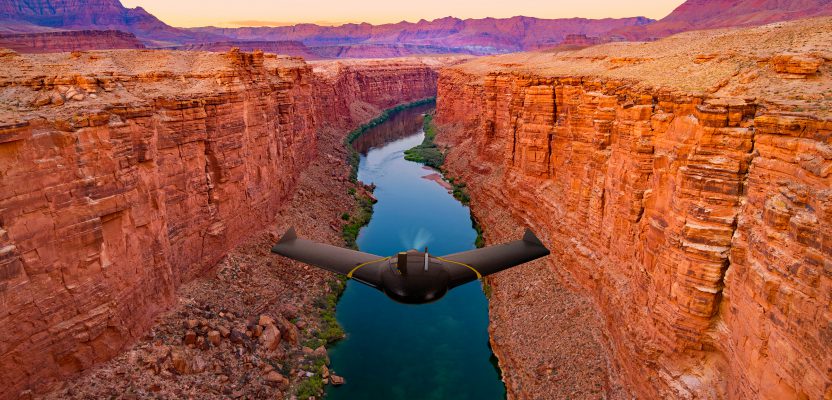I’ve said it before and I’ll say it again: attending the Commercial UAV Expo is the closest you’ll get to drinking out of a fire hose, data-stream-wise, without incurring physical damage. I’m talking metric tons of new and cool UAS stuff.
This year I had the honor to be included as a judge in the expo’s first ever “Pitch the Press” event. Forty nine exhibitors registered to have their company’s products and services judged by a team of journalists. Taking a look at the top 10 finalists will give you an idea of the cool tech on display at this year’s event.
Ainstein offers radar both for UAS platforms and ground-based radar for detection of drone threats. As BVLOS operations become mainstream, lightweight radar sensors like the ones Ainstein offers provide critical air-to-air detection and avoidance capabilities.
Alta Devices makes thin, lightweight, and flexible solar panels that collect solar energy and provide significant boosts to flight times to UAS. The panels bend to cover curved wing surfaces and easily integrate into UAS designs without disturbing aerodynamic flow. Alta Device’s AnyLight power technology can extend daylight flight endurance as much as five times; expanding flight times will be yet another BVLOS-enabling technology.
Ardenna focuses on fast, smart AI-enabled post-processing of inspection data especially for long-run infrastructure inspections. A good example is its work for BNSF Railway.
Cepton is leveraging its experience in automotive and industrial lidar into lightweight (550 grams) and low-cost UAS-borne lidar for mapping applications. Stand by for lidar price plunge.
Drone Deploy is a familiar name in the UAS mapping space. It introduced its new Live Map product which, as the name suggests, provides real time mapping in both RGB and thermal views.
Impossible Aerospace takes a unique approach to UAS design; they built a UAS around the batteries. Result? Up to 2-hour flight times. Impossible Aerospace’s UAS is equipped with optical and thermal imaging; its target market is public safety.
MicaSense introduced its new Altum sensor. Altum combines a radiometric thermal camera with five high-resolution narrow bands, producing advanced thermal, multispectral and high-resolution imagery in one flight for advanced analytics.
NAR Technologies was on hand to tout is Raven AI, a real-time AI-enabled UAS inspection tool. With it, users can get inspection results with live analysis and create preliminary reports on the fly.
Parrot Business Solutions/senseFly introduced its wholly upgraded eBee, the eBee X. The new drone features three new cameras, Steep Landing technology, and a unique Endurance Extension feature for flight times of up to 90 minutes.
Trimble/Applanix touted its APX-15 EI UAV. This GNSS inertial system provides support for an external IMU for gimbaled platforms for increased accuracy.
This is but a small sample of the vast array of UAS technology on display. If you’re a professional operating in this space, you should go!
 This article appeared in xyHt‘s e-newsletter, Pangaea. We email it twice a month, and it covers a variety of unusual geospatial topics in a conversational tone. You’re welcome to subscribe to the e-newsletter here. (You’ll also receive the once-monthly Field Notes newsletter with your subscription.)
This article appeared in xyHt‘s e-newsletter, Pangaea. We email it twice a month, and it covers a variety of unusual geospatial topics in a conversational tone. You’re welcome to subscribe to the e-newsletter here. (You’ll also receive the once-monthly Field Notes newsletter with your subscription.)

